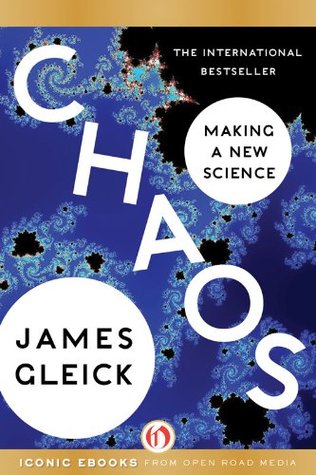More on this book
Community
Kindle Notes & Highlights
WHERE CHAOS BEGINS, classical science stops.
The irregular side of nature, the discontinuous and erratic side—these have been puzzles to science, or worse, monstrosities.
To some physicists chaos is a science of process rather than state, of becoming rather than being.
The most passionate advocates of the new science go so far as to say that twentieth-century science will be remembered for just three things: relativity, quantum mechanics, and chaos. Chaos, they contend, has become the century’s third great revolution in the physical sciences.
“Relativity eliminated the Newtonian illusion of absolute space and time; quantum theory eliminated the Newtonian dream of a controllable measurement process; and chaos eliminates the Laplacian fantasy of deterministic predictability.” Of the three, the revolution in chaos applies to the universe we see and touch, to objects at human scale.
Tiny differences in input could quickly become overwhelming differences in output—a phenomenon given the name “sensitive dependence on initial conditions.”
Lorenz saw that there must be a link between the unwillingness of the weather to repeat itself and the inability of forecasters to predict it—a link between aperiodicity and unpredictability.
The Butterfly Effect acquired a technical name: sensitive dependence on initial conditions. And sensitive dependence on initial conditions was not an altogether new notion.
Nonlinearity means that the act of playing the game has a way of changing the rules.
Every scientist who turned to chaos early had a story to tell of discouragement or open hostility.
Shallow ideas can be assimilated; ideas that require people to reorganize their picture of the world provoke hostility.
THE LABORATORY MOUSE of the new science was the pendulum: emblem of classical mechanics, exemplar of constrained action, epitome of clockwork regularity.
In space, free of friction, periodic motion comes from the orbits of heavenly bodies, but on earth virtually any regular oscillation comes from some cousin of the pendulum.
Those studying chaotic dynamics discovered that the disorderly behavior of simple systems acted as a creative process. It generated complexity:
Poincaré, at the turn of the century, had been the last great mathematician to bring a geometric imagination to bear on the laws of motion in the physical world. He was the first to understand the possibility of chaos;
Differential equations describe the way systems change continuously over time.
Chaos and instability, concepts only beginning to acquire formal definitions, were not the same at all. A chaotic system could be stable if its particular brand of irregularity persisted in the face of small disturbances.
His innovation—an enduring image of chaos in the years that followed—was a structure that became known as the horseshoe.
possibly the simplest is a modification of the linear, Malthusian version: xnext = rx(1 – x).
known as the logistic difference equation.
The equilibrium was the important thing. It did not occur to the ecologists that there might be no equilibrium.
Yorke felt that physicists had learned not to see chaos. In daily life, the Lorenzian quality of sensitive dependence on initial conditions lurks everywhere.
Most differential equations cannot be solved at all.


